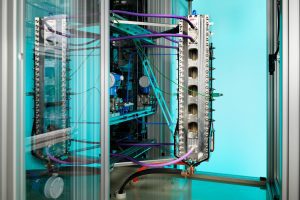By integrating Aquastill’s desalination capabilities with Ohmium’s modular electrolyzers, the collaboration will create new decarbonization opportunities for businesses operating in coastal areas by providing a more efficient, sustainable and affordable way of producing clean energy. In addition, the innovative integration of modular desalination units will facilitate new applications for cost-effective green hydrogen production, including co-locating PEM electrolyzers with offshore wind farms, to enable the production of green hydrogen at source. Ohmium and Aquastill have begun assessing optimal integration of these technologies, with the intention of having these fine-tuned modules commercially available as soon as possible.
“This strategic collaboration is a great example of how the innovative integration of Ohmium and Aquastill’s technologies can enable the expansion of green hydrogen production to new sectors and geographies,” said Arne Ballantine, CEO of Ohmium International. “Utilizing Aquastill’s membrane technology to efficiently produce green hydrogen from seawater has the potential to be a game changer for companies operating in coastal or rural regions that want to affordably and sustainably decarbonize.”
Aquastill’s technology is powered by the residual heat from Ohmium’s electrolyzers and the membrane distillation process simultaneously provides additional cooling capabilities for the electrolyzer. Unlike other energy intensive desalination technologies, the waste heat membrane-based distillation process has minimal energy requirements. These advanced desalination modules feature a modular and compact system design, making them easily transportable to wherever clean water is needed.
“We are excited to be working with Ohmium, to successfully pair their cutting-edge PEM electrolyzers with our membrane distillation technology – providing an ideal platform to expand the transformational impact of green hydrogen production to other industries,” said Bart Nelemans, CEO of Aquastill. “We have already begun to test the integration of our respective technologies, and we are confident that as a result of this joint collaboration we will be able to produce cost-competitive green hydrogen from seawater, while simultaneously helping decarbonize the operations of companies operating in coastal regions.”






